Posts Tagged ‘catering’
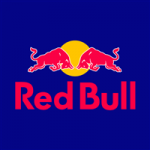
Red Bull business strategy is to associate the brand with a lifestyle of an adventurous spirit. An extensive and aggressive marketing is placed at the core of Red Bull business strategy. The brand’s marketing communication message – ‘Red Bull gives you wings’, is constantly communicated to the target customer segment via multiple marketing communication channels in an integrated manner. Red Bull business strategy is product differentiation and Red Bull is a premium energy drink. Accordingly, Red Bull energy drinks are generally more expensive compared to other energy drinks such as Monster, Rockstar, Lucozade, NOS and Amp. Customers are charged additionally for augmented benefits of Red Bull consumption that include the perception of leading a full and active lifestyle and enhancing mental and physical performance. According to Red Bull business strategy, its competitive advantages rely on the following points: First mover advantage in the energy drink sector in developed countries. Red Bull founder Dietrich Mateschitz was the first to introduce energy drinks to the west by adjusting the taste of Thai drink Krating Daeng. Unique and sweet taste of the energy drink. The Red Bull flavouring is still produced in Bangkok and exported into manufacturing plants internationally. An appealing brand image associated with extreme sports. The company owns a number of sports teams such as RB Leipzig,FC Red Bull Salzburg, Red Bull Brasil and New York Red Bulls to reinforce the brand image. Effective marketing strategy. This integrates Red Bull TV online channel, The Red Bulleting online magazine and about 150 people employed for content marketing and media strategy[1] It has to be noted that Red Bull GmbH is increasingly becoming a media company with the launch and acquisitions of increasing numbers of media businesses. This strategy serves to further strengthen Red Bull brand image via communicating relevant marketing messages to the…
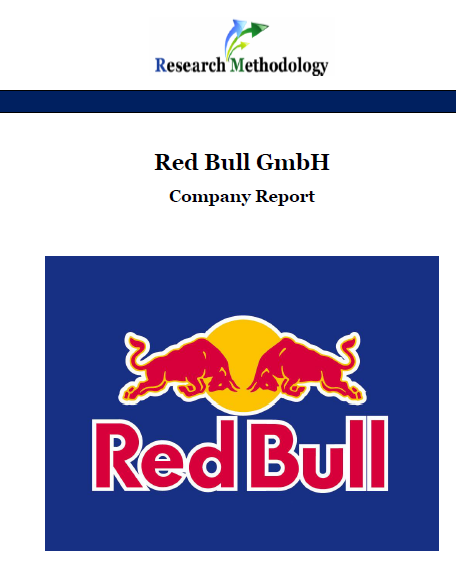
Red Bull GmbH is a manufacturer of one of the most popular energy drinks Red Bull based in Austria. The company has been founded by Dietrich Mateschitz in the mid 1980’s and the first Red Bull Energy Drink was sold in Austria on April 1, 1987. Today, Red Bull beverages are sold in more than 169 countries and about 60 billion cans of Red Bull have been consumed so far. In 2015 alone, more than 5.9 billion cans were sold, which is an increase of 6.1 per cent compared to the previous year. In 2015, Red Bull GmbH revenues amounted to EUR 5.903 billion, a 15.5 per cent increase compared to the previous year. The company employs 10,997 people in 169 countries. Red Bull pursues product differentiation business strategy and the company differentiates its energy drinks according to its perceived positive effects in terms of enhancing physical and mental performance. Red Bull brand possesses solid competitive advantages in terms of the first mover advantage, high scope of brand recognition, an impressive level of profitability and effective marketing strategy. The marketing message of the brand ‘Red Bull gives you wings’ is effectively communicated to the target customer segment via multiple communication channels in an integrated manner. Along with its own media platforms, Red Bull owns a set of sports teams such as RB Leipzig, FC Red Bull Salzburg, Red Bull Brasil, New York Red Bulls, Red Bull Racing and Scuderia Toro Rosso. Despite the phenomenal success of the company, Red Bull has a set of weaknesses that include its overly expensive prices, limited range of products, portfolio of products that are rightly considered as unhealthy and concentrated production facilities. Red Bull GmbH Report contains the application of the major analytical strategic frameworks in business studies such as SWOT, PESTEL, Porter’s Five…

Introduction The 21st century has been dubbed as an information age (Bell and Blanchfower, 2011) and internet in general, and social media in particular are playing an instrumental role in facilitating the spread of information throughout the globe at a rapid speed. Moreover, increasing levels of interactivity of social media platforms is further contributing to the level of their popularity, and nowadays social media has been effectively adopted by many businesses along a wide range of industries as a highly effective marketing and communication platform. At the same time, the level of use of social media varies between various industries, as well as, individual organisations within a particular industry, and while some organisations are beginning to realise substantial opportunities offered by social media, others are already utilising these opportunities to a full extent. This essay contains a critical evaluation of the influence of social media on the popularity of a tourism destination. The essay starts with discussions about increasing influence of social media on consumer behaviour. This is followed by critical analyses of potential benefits of social media to hospitality organisations. Moreover, issues related to negative impacts of social media on the performance of hospitality organisations are also addressed in this essay. Essay is concluded by providing a set of recommendations to strategic and marketing managers of hospitality organisations in terms of benefiting from opportunities offered by social media to a maximum extent. займ онлайн 19 лет Increasing influence of social media on consumer behaviour in service sector Social media can be defined as “websites and applications that enable users to create and share or to participate in social networking” (Oxford Dictionaries, 2013) and social media has had immense impact on personal and professional lives of many people around the globe at various levels. Types of social media include personal and corporate blogs,…
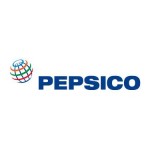
PepsiCo mission statement has been worded by CEO Indra Nooyi as ‘Performance with Purpose’ and this principle is closely integrated with the strategic direction chosen for the company. The most prominent aspects of PepsiCo business strategy are based on the following six principles: First, achieving growth through mergers and acquisitions (M&A). M&A can offer the advantages of gaining access to competencies and infrastructure, reducing direct costs and overheads and achieving organic growth. Recently, PepsiCo has completed as a set of important acquisitions such as acquisition of juice and diary businesses Lebedyansky and Wimm-Bill-Dann in Russia, Lucky snacks and Mabel cookies in Brazil, and Dilexis cookies in Argentina. M&A can be specified as one of the cornerstones of PepsiCo business strategy. As a result of an aggressive pursuit of this strategy, today PepsiCo portfolio comprises 22 brands and each of these brands have generated at least one billion USD in retail sales in 2015.[1] Second, forming strategic alliances in the global scale. Specifically, strategic partnerships have been formed with Tingyi in China in order to claim a share in growing beverage market in China. Moreover, formation of a joint-venture with Tata in India to enhance drinking water manufacturing capabilities, and initiation of strategic partnership with Almarai in Saudi Arabia can be mentioned to illustrate PepsiCo’s adoption of strategic alliances as an integral part of the corporate strategy. Important strategic alliances are formed by PepsiCo at home markets as well. Specifically, by forming a strategic alliance with Starbucks – a global coffee house chain, PepsiCo has been able to claim its share from increasing energy drink market segment. Third, focusing on emerging markets. An aggressive pursuit of this strategy has had positive impact on the bottom line. The year of 2015 witnessed a double-digit growth in the sales of snacks in China and…
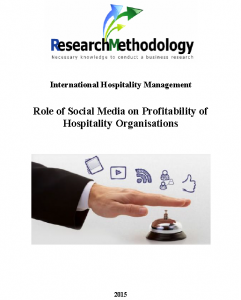
The 21st century has been dubbed as an information age (Bell and Blanchfower, 2011) and internet in general, and social media in particular are playing an instrumental role in facilitating the spread of information throughout the globe at a rapid speed. Moreover, increasing levels of interactivity of social media platforms is further contributing to the level of their popularity, and nowadays social media has been effectively adopted by many businesses along a wide range of industries as a highly effective marketing and communication platform. At the same time, the level of use of social media varies between various industries, as well as, individual organisations within a particular industry, and while some organisations are beginning to realise substantial opportunities offered by social media, others are already utilising these opportunities to a full extent. This essay contains a critical evaluation of the role of social media on the popularity of a tourism destination. The essay starts with discussions about increasing influence of social media on consumer behaviour. This is followed by critical analyses of potential benefits of social media to hospitality organisations. Moreover, issues related to negative impacts of social media on the performance of hospitality organisations are also addressed in this essay. Essay is concluded by providing a set of recommendations to strategic and marketing managers of hospitality organisations in terms of benefiting from opportunities offered by social media to a maximum extent. Introduction 1 Increasing influence of social media on consumer behaviour in service sector 2 Potential benefits of social media to hospitality organisations 5 Negative impacts of social media on the performance of hospitality organisations 8 Recommendations for managers of hospitality organisations in relation to social media 10 Conclusions 14 References 16 Cathay Pacific DoubleTree Club Hotel Facebook Hampton Hotels Twitter How do I receive the report? Once payment…

Strategic Theory: Value-Chain Analysis The model of Value-Chain Analysis introduced by Michael Porter (1985) divides business activities into two groups: primary activities and support activities. Primary activities include inbound logistics, operations, outbound logistics, marketing sales, and service and they are related to producing products and services in a direct manner. Support activities, on the other hand, as the name suggests needed to support primary activities of the firm and they consist of firm infrastructure, human resources management, technology development, and procurement. Core benefit of Value-Chain Analysis framework relates to identification and utilisation of opportunities to add more values to certain business processes with positive implications to overall level of competitiveness of the firm. In other words, application of Value-Chain Analysis model provides platform for analysing business processes in an individual manner, so that competitive advantage can be obtained in relation to a specific business process. Moreover, Value-Chain Analysis can be applied to increase the levels of overall strategic competency of the business and strategic competency can be explained as “what in business units does exceptionally well -such as a customer relationship programme, manufacturing, or promotion – that has strategic importance to that business” (Aaker and McLoughlin, 2010, p.7) Inbound logistics relates to a set of activities associated with receiving materials and warehousing and it also includes supply-chain management practices. Operations, on the other hand, relate to the process of transformation of inputs into outputs. Outbound logistics is associated with processing of orders and distribution of products and services. Marketing and sales refers to activities of development and implementation of integrated marketing strategy of the firm. The latest trends in marketing and sales activities can be specified as increasing integration of social media, focus on corporate social responsibility and customer data privacy. Service activities within the framework of Value-Chain Analysis relate to…
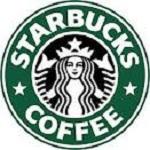
The following table revisits opportunities and threats faced by Starbucks in the UK market and briefly analyses the extent of fit between these and Starbucks strengths and weaknesses: Fit Comments Opportunities New product development Yes With the record revenues of $11.7 generated in 2011, Starbuck possesses sufficient amount of financial resources in order to engage in new product development in a successful manner Increasing the level of operational efficiency through technological innovation Yes Starbucks possesses financial and human resources to engage in research and development in order to increase the level of operational efficiency through technological innovation Increasing the range of target customer segment Yes Necessary amount of expertise and resources are possessed by Starbucks so that the range of target customer segment can be increasedSpecifically, a range of lower priced drinks and food need to be added to Starbucks menu so that individuals with lower budgets can also be included to target customer segment Threats Further damage to brand image due to paying no taxes scandal Yes Effective PR programs can be initiated by Starbucks so that the negative impact of the scandal can be minimised Adverse impact of changes in the UK taxation policy No Starbucks possesses no tools to impact changes in UK taxation policies Continuing economic issues in the EU and the UK negatively impacting the levels of consumer spending No Starbucks management can not address macroeconomic issues in the UK with negative implications on the levels of consumer spending The level of strategic fit for Starbucks The Level of Starbucks Match to CSF It is strategically important for businesses to address industry CSF in a successful manner in order to achieve long-term growth in the market. The level of Starbucks match to CSF is illustrated in Table…

The nature and level of utilisation of marketing strategy by Illy in general and ‘Illy’s and Boos Cupcakery’ in Bristol in particular can be effectively explained by utilising the concept of marketing communications mix. Kotler and Keller (2006) divide elements of marketing communication mix into large six groups that consist of advertising, sales promotion, events and experiences, public relations and publicity, direct marketing and personal selling. Marketing strategy developed by Illy aims to communicate Italian origins of the brand and perceived high quality of products through integration of various marketing communication channels as explained below in a greater details. Advertising Generally, any form of external communication of a business entity can be categorised as advertising. Indoor and outdoor posters, and attractive displays at the point of purchase are the most popular advertising methods used by ‘Illy’s and Boos Cupcakery’ in Bristol. Illy advertising strategy makes an extensive use of print and broadcast advertising in a global scale. Popular social networking site YouTube is one of the main platforms for Illy media advertisements. Sales Promotions The main objectives behind sales promotions can be specified as offering short-term price incentives to customers in order to increase the volume of sales. ‘Illy’s and Boos Cupcakery’ in Bristol engages in sales promotions in a regular manner through temporarily reducing prices for different products. Moreover, Illy engages in occasional sales promotion campaigns through sending promotion offers to customers’ e-mails, including complimentary item with the purchase of specific range of products. Also, unlike many other coffee chains, barristers at Illy are taught to welcome occasions when they are asked for a coffee sample for free. Events and Experiences ‘Illy’s and Boos Cupcakery’ in Bristol does not engage in events and experiences due to the small size of the venue and budget limitations. However,…

Porter’s (1985) value chain analysis illustrates the manner in which various business activities relate to the competitive advantage of firms. The model divides business activities in primary and support activities. Primary activities deal with the delivery of products in a direct manner, whereas the main aim of support activities relate to increasing the levels of effectiveness of various business processes. Primary Activities Inbound logistics include activities associated with bringing and storing of all external materials. For Illy, this comprises harvesting, parchmenting, quality control and purchasing within countries where the coffee beans are grown, shipping the beans in bags to company plant in Trieste, Italy. Expenses associated with inbound logistics account for significant amount due to the large distance between operations plant in Trieste and purchasing plants in Africa, Asia and Latin America continents and this can be specified as one of the major factors causing the levels of overall costs to increase. Within the scale of ‘Illy’s and Boos Cupcakery’ specific branch, on the other hand, inbound logistics involve the delivery of necessary products and ingredients on a daily basis, according to the order sent by the shift manager on the previous day. Operations relate to the ways in which outputs are created out of inputs. Illy operations mainly include blending, roasting and packaging coffee beans in company plant in Trieste. Basically, internal operations consist of a set of consequent processes as a result of which coffee beans in bags are turned into packaged products in paper packages and metal cans depending on the nature of each individual product. In case of ‘Illy’s and Boos Cupcakery’ in Bristol operations involve physical preparation of coffee and other beverages and food within the store. Outbound logistics activities include all activities involved in sending ready products to consumers. Illy products…

This article represents a brief analysis of diversification and expansion opportunities into Chinese market for a local restaurant and cafe in the UK. The article contains a brief overview of Chinese market, discusses market entry strategies available to the business, and discusses a range of most important factors impacting the business proposal. Overview of Chinese Market China is a newly emerging superpower, with the levels of GDP suppressing 72.1 trillion USD in 2011 (Statistical Yearbook, 2012) and the further increase has been forecasted with positive implications on the on the amounts of consumer spending. Currently, a set of multinational fast-food brands such as McDonald’s KFC, and Pizza Hut restaurants are increasing the level of their presence in an aggressive manner that can be interpreted as a signal for increasing level of demand in China towards foreign food and lifestyle. Market Entry Strategies Alternative market entry strategies the restaurant and café can employ in order to enter China consist of licensing, franchising, joint-ventures and wholly owned subsidiaries. Licensing involves local restaurants in China to trade under the license of the UK restaurant. This type of market entry offers the advantages of low risk and lower level of capital requirements. However, the disadvantages include limited scope of participation in operations, and lower potentials for generating significant revenues. Franchising is similar to licensing to a certain extent, but different in a way that it involves closer level of cooperation between the parties, and grants the right to a local business in China to use the logo and trademark of the restaurant in UK. Joint-ventures are another form of market entry available to the restaurant and café in the UK to enter China. The advantages of joint-ventures include shared risk and expenses, and gaining expertise in the local market. However, joint-ventures…
